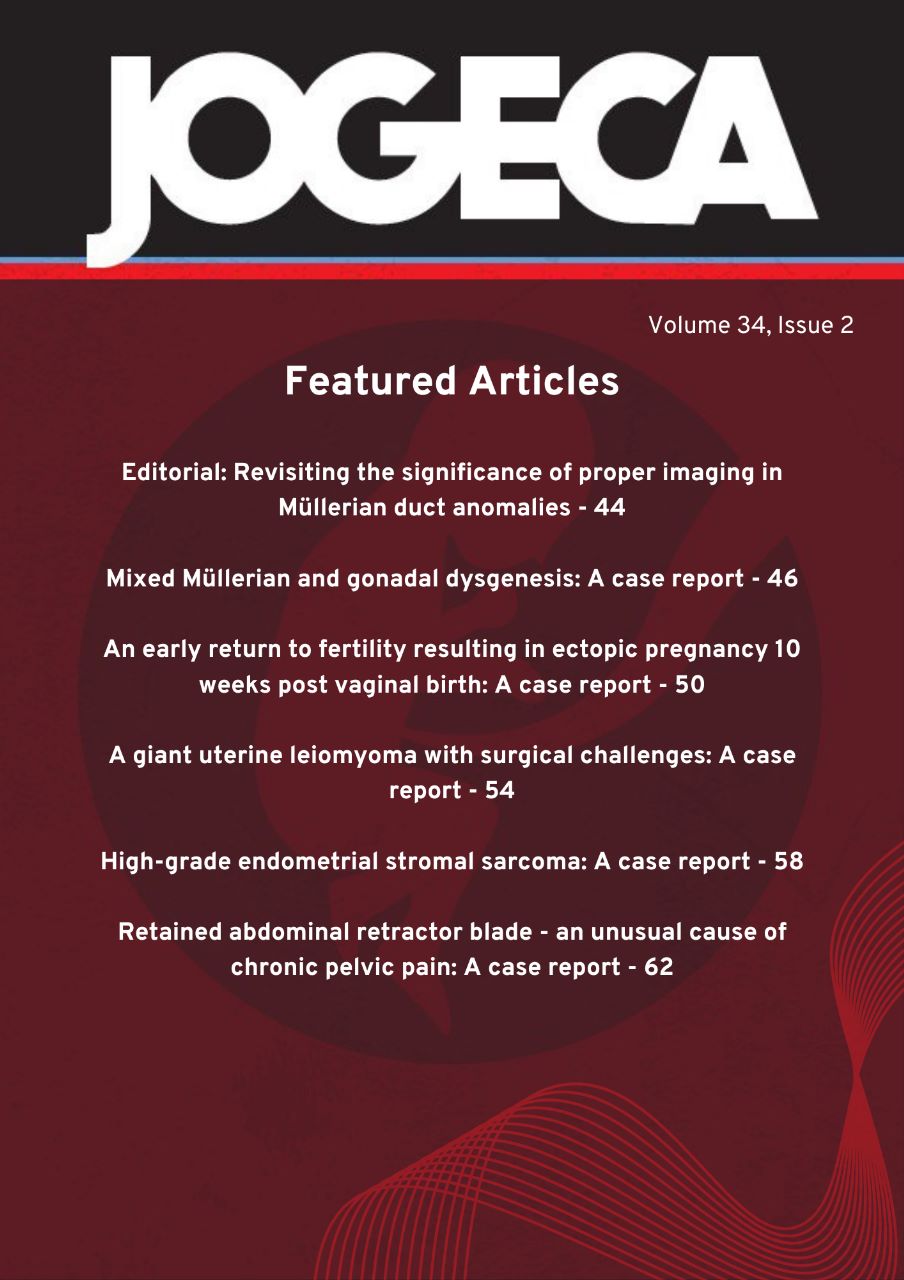Fetal lower urinary tract obstruction caused by sacrococcygeal teratoma: A case report
DOI:
https://doi.org/10.59692/jogeca.v36i1.190Keywords:
Fetal, LUTO, Vesicocentesis, Sacrococcygeal teratomaAbstract
Background: Fetal lower urinary tract obstruction (LUTO) is a rare occurrence that is usually associated
with major morbidity and mortality after birth. It has an incidence of 2.2 in 10000 pregnancies. In males,
the most common cause is persistent posterior urethral valves (50-60%). Other causes include urethral
atresia with a poor prognosis. Most fetuses that survive to term with LUTO need dialysis or renal
transplant.
Case presentation: A 35-year-old gravida 3 presented for routine antenatal follow-up. Her antenatal
follow-up remained normal until she underwent a growth scan at 33 weeks. Ultrasound revealed a fetus
within normal growth centiles, but the renal system had features of obstruction. Renal calyces were
dilated with hyperechoic renal parenchyma. The bladder was also markedly distended and had a
thickened wall, and a keyhole sign was present. There was a multicystic lesion in the sacral region
without blood flow on Doppler imaging. There was oligohydramnios. She had fetal vesicocentesis, which
revealed normal kidney function. She had serial fetal vesicocentesis, and renal ultrasound showed
improvement in the corticomedullary differentiation of the kidney. At 38 weeks, the patient underwent a
cesarean delivery. Imaging studies showed a sacrococcygeal teratoma that was causing pressure on the
renal system. This was excised, and the patient was allowed to return home on physiotherapy. Renal
function test after delivery remained normal.
Conclusion: Fetal lower urinary tract obstruction in males is mostly managed using the placement of
vesicoamniotic shunts or stents. In male fetuses with posterior urethral valves, ablation is performed in
utero using cystoscopy. In this case report, LUTO was managed by serial vesicocentesis, which
preserved renal function. In low-resource settings where surgery is not available, serial vesicocentesis
can be performed to relieve obstruction.
Published
How to Cite
Issue
Section
Categories
License
Copyright (c) 2024 The authors.

This work is licensed under a Creative Commons Attribution 4.0 International License.




